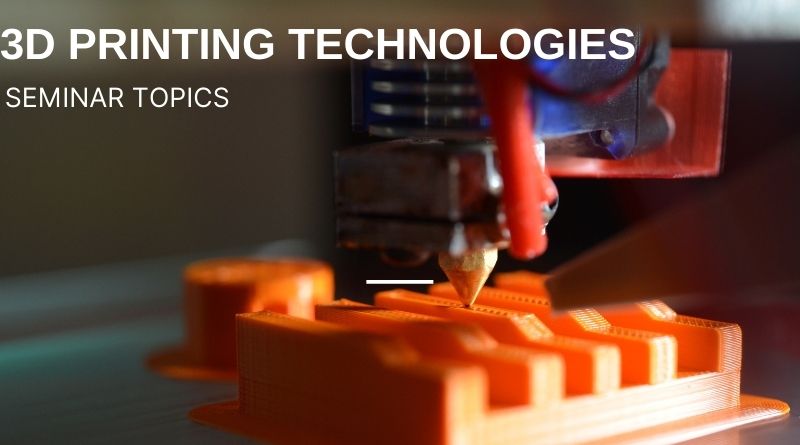3D printing Abstract
2D printing has been part of our lives for many years. During this time, many technologies were used for printing, but the truth is that today 3D printing is already a reality. It is difficult not to have heard of three-dimensional printing today, even to have seen some of the creations, however, it is still a world quite unknown to most people. If it is a topic of interest to you, we are going to show a little history about 3D printers, what this type of printing consists of and how it works, types of printers and some models to get started in this world.
What is 3D printing
3D printing is a group of additive manufacturing technologies capable of creating a three-dimensional object by superimposing successive layers of a certain material. A process by which physical objects are created by layering a material from a digital model. Therefore, it is a process in which a physical object is created in three dimensions through a digital object or models using a 3D printer that can use different technologies and materials to overlap layers until a perfect replica is created.
Before starting the printing process, it is the printing software that will be in charge of separating the printing into layers as thin as the output plastic that we are going to use (there are several, we will detail them below). For each layer, the printer will move on the plane to release the necessary plastic in each layer, thus forming the figure in three dimensions.
A little history
Although it may seem like a modern term and technology to us, the truth is that in 1976 the first equipment and construction materials for 3D printing were already developed. A few years later, in 1981, Hideo Kodama invented two methods of AM manufacturing a three-dimensional plastic model with a photohardening polymer.
In 1984 , several projects were presented and patented based on the stereolithography process, which is based on adding layers by curing photopolymers with ultraviolet lasers. In addition, a system for generating three-dimensional objects by creating a pattern of the object to be formed was defined, which gave rise to the STL file format, which is widely accepted today for 3D printing.
How does it work
3D printing requires the use of software , the corresponding hardware of the machine or printer and the materials used for the printing itself and that all of them work together. The printing process itself consists of creating three-dimensional objects from the superposition of layers from the bottom up.
Before starting the process, the software divides the graphic into layers as thin as the diameter of the output material. For each layer, the printer moves on the plane to release material on the corresponding coordinates and thus form the figure in three dimensions and identical to the one designed in 2D.
Therefore, the first thing we need to print an object in three dimensions is a file created with some 3D modeling software . The next thing is to use the ideal material for its manufacture. Thermoplastic materials are generally used, but there are also 3D printers capable of using other materials such as metal, resins or polymers. Of course, in this case the cost of the printers is much higher since they must be able to melt the material for its use in layered printing.
And finally, of course, there is the printer itself, which, as we can already deduce, there are different types depending, above all, on the material used for 3D printing.
The future of 3D printing
3D printing has evolved a lot in recent years and the infinity of possibilities it offers has already become clear. Today, although it is already used in certain areas, the truth is that it is expected that in the future it will take on an even greater role than ink printers have today.
And it is that three-dimensional object printers offer many more possibilities than ink printers. The truth is that the expectations for this type of device are very high, especially since it is expected that they can change our lives in the near future

Leave a Reply